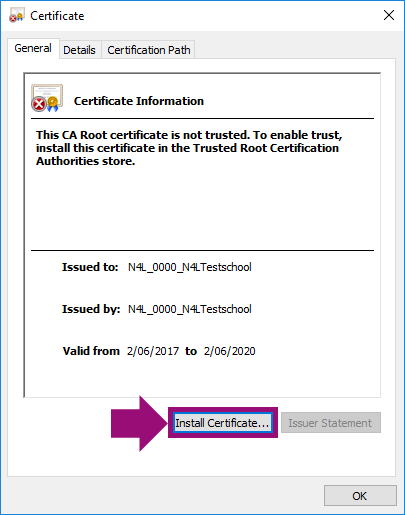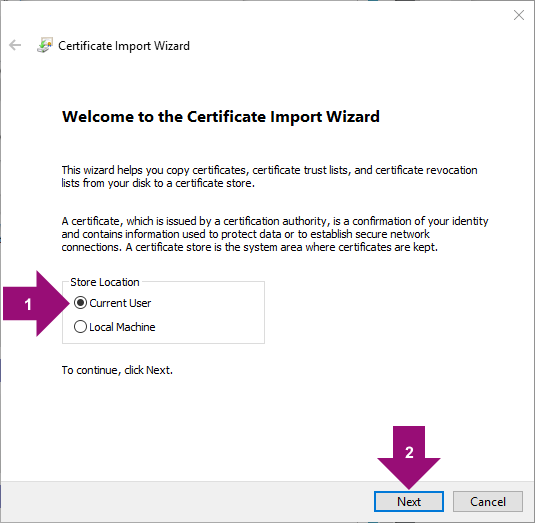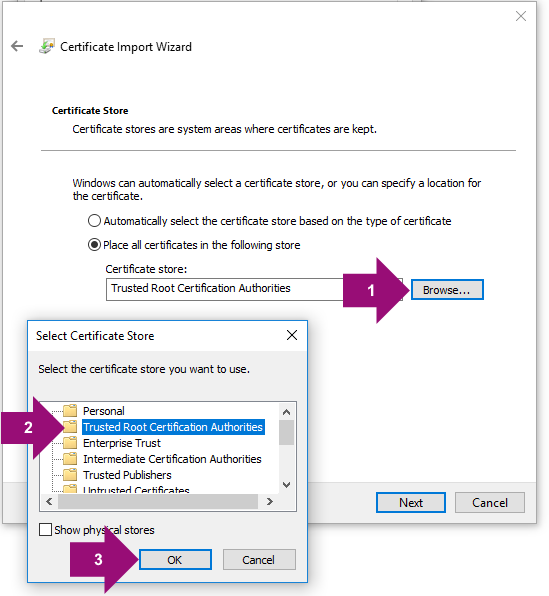For information on why an SSL Certificate is required for SSL Inspection, see SSL Inspection.
Deploying SSL Certificates to Multiple Windows Devices
You may choose to install a certificate manually, as per this article:
- For testing purposes on an individual client
- If your network has a small number of devices that need SSL Filtering
- If your network does not have any method of deploying a certificate
If your network has a number of Windows devices, you may prefer to deploy the certificates via Group Policy (if you have an Active Directory server) or using a script.
Please see Deploying an SSL Certificate to Multiple Windows Devices for more information.
When installing certificates manually onto devices which run Microsoft Windows, some additional steps are required to maintain maximum security, this involves installing the certificate into the correct location and certificate store during the certificate installation wizard. There are two options to choose from.
| Store Location | Use Case |
|---|
| Local Machine Store | Where the device will be used by multiple users |
| Current User Store | Where the device will be used by only one staff member/student, or where only one user may have consented to having their secure traffic inspected. |
Installing an SSL Certificate (as a Trusted Root Certification Authority)
-
Download the certificate file from the N4L SSL Inspection Certificate page.
-
Right-click on the certificate file, and choose Open. You may see a Security Warning window. If so, choose Open.

Figure 1: The Security Warning dialog - choose Open to continue
-
The Certificate window will appear. Click Install Certificate...

Figure 2: The certificate window. This shows details about the certificate
-
Choose a Store Location (see Considerations) and click Next

Figure 3: Choosing a certificate store
-
On the next screen, click Browse. Choose the Trusted Root Certification Authorities store. Click OK.

Figure 4: Click Browse to bring up the Select Certificate Store window
-
Click Finish.
Figure 5: Click Finish to complete the certificate installation process
When To Perform These Steps
Installing an SSL certificate is usually required after configuring SSL Filtering for the first time, or when the certificate has expired or been re-issued.
If you are installing certificates manually on all of your Windows devices, these steps will need to be performed on each new device that is to be subject to SSL Filtering.



